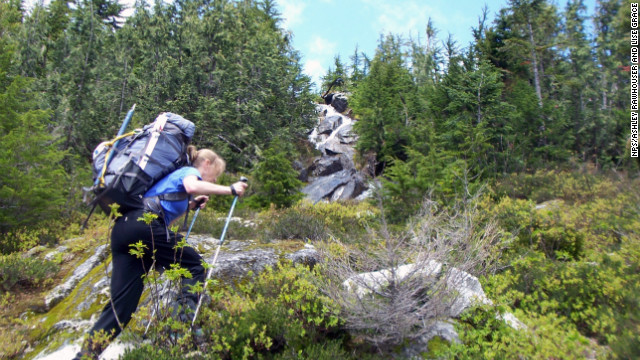 Using the Hiking Pole and Its Components Advocates of hiking poles have showed how it can greatly relieve the impact it has on knee joints and leg muscles when climbing, by consequently allowing the arms and the shoulder muscles to support them upon impact. When using the arm and shoulder muscles opposite to the lead foot it reduces your body weight and so when using the pole to walk on level ground, the is a forward impulse when the down tip of the pole is positioned behind your body. Also, when going downhill, you will have better stability if you put your hands on the top most part of the pole and extending them forward since it allows the arm and shoulder muscles to help. Today, with new designs geared to make the hiking pole more valuable and handy, it has become increasingly popular and accessible. There are three prominent components to the entire pole. The strap or the sling, thought of primarily as a leash to keep it fastened in ones hands, has been tremendously improved to prevent straining the wrist in an effort of engaging the arm and the shoulder in propelling a downward trust while climbing and walking. The strap is not to tuck our hands into it but to just pop it out with the underneath of your forehand is supported by it whenever a descending force is applied, while your hands grip the pole. Having the strap starting flat against the top of the grip and being adjustable will help keep up with the size of each hand.
Using the Hiking Pole and Its Components Advocates of hiking poles have showed how it can greatly relieve the impact it has on knee joints and leg muscles when climbing, by consequently allowing the arms and the shoulder muscles to support them upon impact. When using the arm and shoulder muscles opposite to the lead foot it reduces your body weight and so when using the pole to walk on level ground, the is a forward impulse when the down tip of the pole is positioned behind your body. Also, when going downhill, you will have better stability if you put your hands on the top most part of the pole and extending them forward since it allows the arm and shoulder muscles to help. Today, with new designs geared to make the hiking pole more valuable and handy, it has become increasingly popular and accessible. There are three prominent components to the entire pole. The strap or the sling, thought of primarily as a leash to keep it fastened in ones hands, has been tremendously improved to prevent straining the wrist in an effort of engaging the arm and the shoulder in propelling a downward trust while climbing and walking. The strap is not to tuck our hands into it but to just pop it out with the underneath of your forehand is supported by it whenever a descending force is applied, while your hands grip the pole. Having the strap starting flat against the top of the grip and being adjustable will help keep up with the size of each hand.
Figuring Out Activities
When the hand is positioned in a meticulous height, the ergonomic shape of the grip tailors the angel of the hand; this is how the grip is designed now whereas before it was created to simply prevent the hand from slipping. Going uphill embroils a certain angle since the pole is mostly situated parallel to the shoulder, and another angle when walking on level ground when the forearm is positioned at thirty degree angle or somewhere around the hip. Another pole improvement seen today is the shape of the top most edge of the pole which is designed to allow the palm of the hand to rest graciously on top. There are also new designs on lower grip shapes so that users can make a choice.
The 10 Rules of Activities And How Learn More
Another component of the hiking pole is the chaff which determine the strength, the weight and the versatility of the pole when in use of when transported. The pole uses high tensile properties which is better than iron and steel so that its weight is reduced and it has a very adaptable mechanism that makes it easy to use but strong enough not to allow to slip at any point.
Thu, Dec 26, 2024
Love your feet choose Original Product
